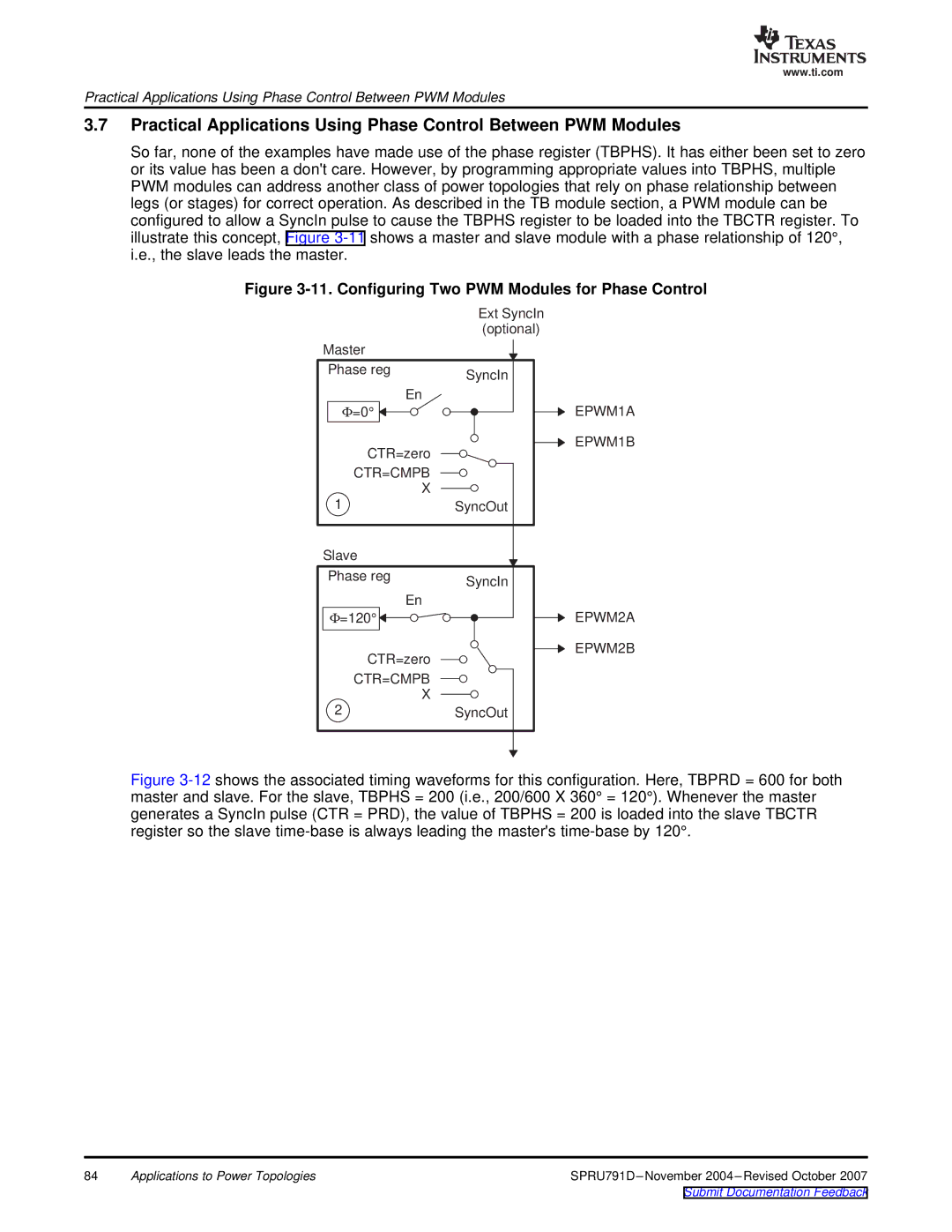
www.ti.com
Practical Applications Using Phase Control Between PWM Modules
3.7Practical Applications Using Phase Control Between PWM Modules
So far, none of the examples have made use of the phase register (TBPHS). It has either been set to zero or its value has been a don't care. However, by programming appropriate values into TBPHS, multiple PWM modules can address another class of power topologies that rely on phase relationship between legs (or stages) for correct operation. As described in the TB module section, a PWM module can be
configured to allow a SyncIn pulse to cause the TBPHS register to be loaded into the TBCTR register. To illustrate this concept, Figure
Figure 3-11. Configuring Two PWM Modules for Phase Control
| Ext SyncIn |
| (optional) |
Master |
|
Phase reg | SyncIn |
| |
En |
|
Φ=0° | EPWM1A |
CTR=zero | EPWM1B |
| |
CTR=CMPB |
|
X |
|
1 | SyncOut |
Slave |
|
Phase reg | SyncIn |
| |
En |
|
Φ=120° | EPWM2A |
CTR=zero | EPWM2B |
| |
CTR=CMPB |
|
X |
|
2 | SyncOut |
Figure 3-12 shows the associated timing waveforms for this configuration. Here, TBPRD = 600 for both master and slave. For the slave, TBPHS = 200 (i.e., 200/600 X 360° = 120°). Whenever the master generates a SyncIn pulse (CTR = PRD), the value of TBPHS = 200 is loaded into the slave TBCTR register so the slave time-base is always leading the master's time-base by 120°.
84 | Applications to Power Topologies |
